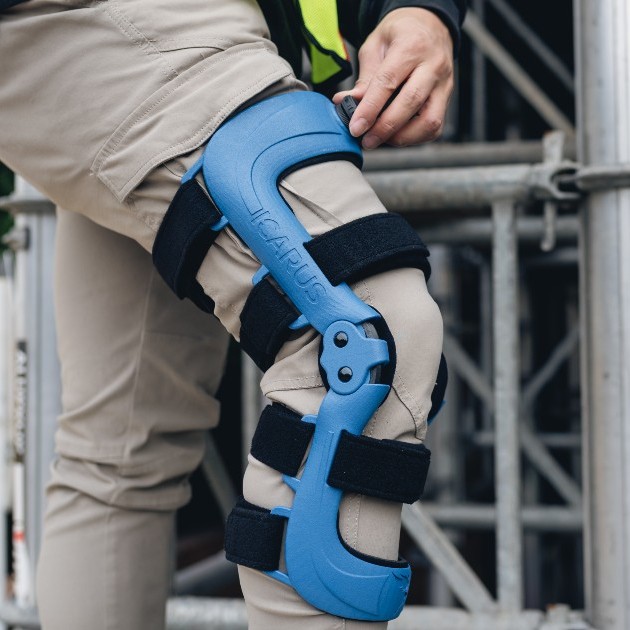The knee is the body’s largest and also most commonly injured joint. Trauma to the tissue that makes up the knee joint, including the tendons, ligaments, cartilage, muscles, and bones, leads to injury. The trauma can occur from a fall, forceful impact during an auto accident, or certain types of sports and exercise. The most common knee injuries are fractures, sprains, tears, and dislocations.
Knee injuries often require immediate medical attention and some even need surgery. Although knee injuries are disruptive and painful, the good news is there are some ways to reduce the risk and avoid knee injuries. In this blog, we’ll discuss ways to avoid a knee injury.
Maintain a Healthy Weight
The pressure placed on your knees is impacted by the type of activity you are performing. For example, while walking down a flight of stairs your knees endure up to 5x your body weight! When you walk it can be 150% of your body weight or more. Think about this, an extra 10 pounds can mean your knees are supporting an additional 5 pounds of pressure with each step you take.
The extra stress on your joints makes you more susceptible to injuries or chronic pain and can eventually lead to osteoarthritis. The higher the weight, the more the stress. Maintaining a healthy BMI helps to reduce the risk of knee injuries due to stress.
Wear Protective Equipment
If you participate in an activity like rollerblading where there’s the potential to fall, wearing knee guards or another form of protection significantly helps shield your knees and minimizes the risk of injury. Knee protection helps prevent bad bruises and even fractures in the event of a fall. Knee braces offer one form of knee protection. A knee brace can help prevent damage to the knee, or prevent further progression of conditions such as osteoarthritis of the knee.
Wearing a knee brace during sports or activity can prevent traumatic injury and extend the life of your joints. A new type of knee brace, the multi-compartment unloader provides protection to the entire joint.
Wear The Right Shoes
Your shoes are very important because they affect the amount of impact your knees take. According to experts, the right shoes are the first line of defence for knee pain. No specific brand or style is necessarily better. It really depends on your foot and the arch. Research on shoes with more padding that claim to offer support when exercising proved they weren’t necessarily better. You’ll want to visit a sporting goods store to get a proper shoe fitting and see which shoes fit you most comfortably.
High heels place stress on your quads, increasing the pressure within the knee joint. A better option for your knees are flats or a mid-heel pump.
Ensure Proper Stretching
Robert Gotlin, the director of sports rehabilitation at Beth Israel Medical Center in New York City, stated that the runner’s stretch is one of the most common things that cause injury. Although runners may feel this stretch is helpful, it’s actually jamming the kneecap into the bone behind it, the femur.
Repeatedly jamming the kneecap sets the stage for chondromalacia – a condition in which the cartilage under your knee cap becomes softened and results in pain. Warming up and stretching is important before exercise, but it must be done properly. Instead of the runner’s stretch, try stretching the muscles in the front and back of your thighs to decrease tension on your tendons and relieve pressure on the knees.
Modify Your Exercise Routine
Certain types of exercise are more likely to increase the risk of injury. However, it’s important that you don’t stop moving in an effort to avoid injury. A decrease in activity weakens your knees and puts you at a greater risk of injury. If your knees cause you pain while exercising, consider modifying how you exercise or the type of exercise to prevent further injury. Low-impact activities like rowing, swimming, spinning, and walking are less likely to result in knee injuries than running and playing contact sports. You can still get an efficient workout without having to add pressure to your knees.
Introduce Weight Training
Weight training exercises help to strengthen your leg and knee muscles, which in turn helps reduce your chances of injury and improves your rate of recovery. A strengthening and stabilizing routine is ideal for most. However, it’s important to use the proper techniques to avoid placing unnecessary and unintentional stress on your knees.
Improve Your Posture
It’s something you probably hear all the time.
Poor posture, such as slouching and bending at the waist puts pressure on your knees, back, and shoulders which increases the risk of a knee injury. Try to walk and sit with your head above your shoulders and your shoulders directly above your core. This will ensure that your body is less susceptible to injury caused by avoidable factors.
Takeaway
In taking steps to protect your knees, you are able to help yourself and your body maintain a healthy, active lifestyle for years to come. At Icarus Medical, our team of professionals is here to help you eliminate knee pain, aid your recovery, and avoid future injuries. Getting you back to the activities you love, with the people you love.

